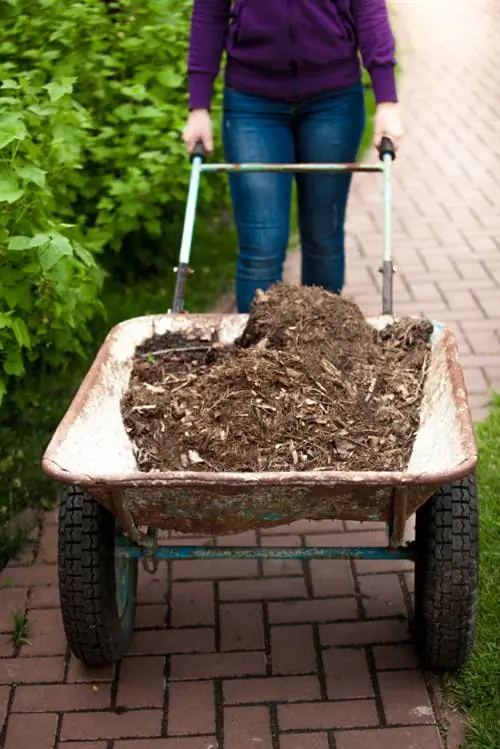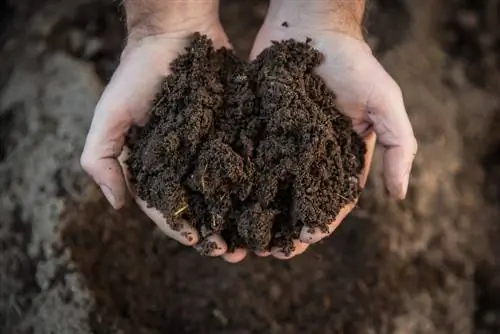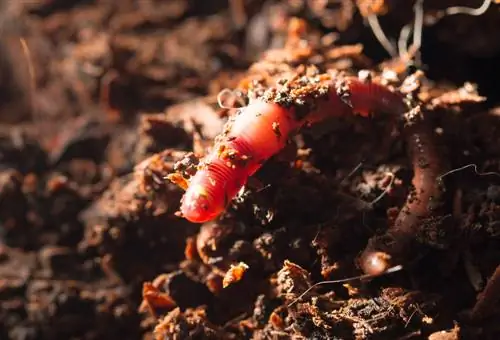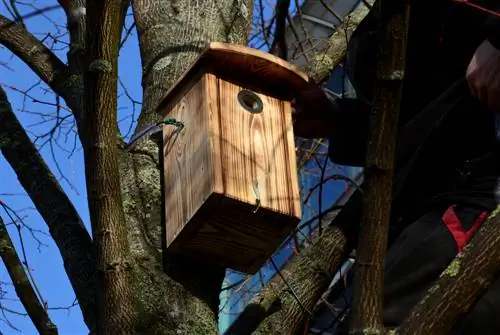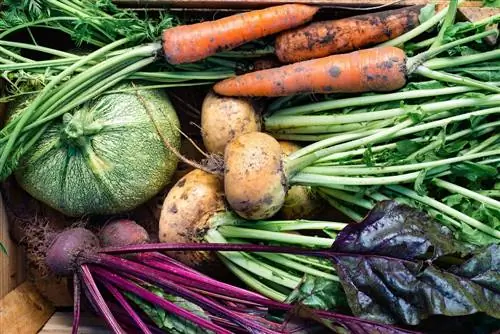- Author admin [email protected].
- Public 2023-12-16 16:46.
- Last modified 2025-06-01 06:02.
There are different ways compost worms get into the compost pile. Some cost money or require nightly collections in rainy weather. These tips reveal two strategies for attracting compost worms for free and effortlessly.

How to attract compost worms?
To attract compost worms, place a bait made from coffee grounds, leaves or compost soil in a shady location. Alternatively, you can lay an organic bait trail of fruit and vegetable peels, mushrooms and eggshells up to the compost pile. Always cover the bait material with cardboard, leaves or fleece.
Baiting compost worms with coffee grounds - instructions
Compost worms have a weakness for coffee grounds. The following recipe takes advantage of this preference to lure the sought-after humus producers. The following instructions explain step by step how to successfully attract compost worms in the garden:
Ingredients
- Cardboard or egg carton
- Coffee grounds, ideally fresh and still slightly moist
- crushed leaves or straw or ripe compost soil
- Spray bottle or watering can
- Bucket
- Stones
Create compost worm bait
The ideal time window is from spring to autumn, preferably in mild, humid weather. Because clocks run slower in the compost worm world, please plan the bait campaign to last several weeks. How to do it right:
- 2-3 handfuls of leaves, straw or compost into the bucket
- Add 1 handful of coffee grounds
- Mix everything well
- Spread the mixture on a plate-sized surface in a shady location
- Moisten with a fine shower gel
- Cover bait material with cardboard or egg carton
- Moisten the cover with collected rainwater (do not soak)
- Weighing down cardboard with stones
In the coming weeks, please refill with fresh bait material every two to three days and check the moisture content. Once a sufficient number of compost worms have arrived, dig out the bait site five to 10 centimeters deep and move the attracted worm colony onto the compost.
Attracting compost worms with organic bait - How to do it
If decomposition in the compost heap takes place in slow motion, compost worms are conspicuous by their absence. You can now dig deep into your pockets and buy young worms. With a little patience and the right bait, you can attract compost worms that are in the garden but can't find their way to the compost pile. This is how it works:
- Bait material: fruit, vegetable or onion peels, mushrooms, eggshells (no meat, no sausage or cheese)
- Laying a lure trail: Lay out bait material in lines from shady, damp places to the compost
Compost worms shy away from light. So that they follow the tempting bait trail, please cover the organic material with fleece, cardboard or leaves and brushwood.
Avoid common mistakes - tips
Sometimes the compost worm bait you create remains orphaned or attracts dreaded pests. So that you don't have such a mishap, the following table draws your attention to five common mistakes with practical tips:
| Error | Why? | What to do? |
|---|---|---|
| Bait created with forest soil or peat | too sour | Testing soil with pH value strips (€2.00 on Amazon) |
| Oak leaves, pine needles used | too sour | use neutral foliage (birch, chestnut, fruit tree) |
| Catalogue, glossy paper used | poisonous | Use egg carton, unprinted cardboard |
| Sunny bait spot | too bright | Putting bait in the shade |
| Meat/sausage as bait | attracts rats and mice | Lay out fruit, vegetable and onion peels |
Tip
Did you know that fat grubs in compost are an unmistakable sign of quality? Discerning rose chafer or rhinoceros beetle ladies only choose perfectly designed compost heaps for their kindergarten. The fat larvae also participate diligently in the decomposition process. The result is earthy, forest-smelling, organic fertilizer in premium quality.


